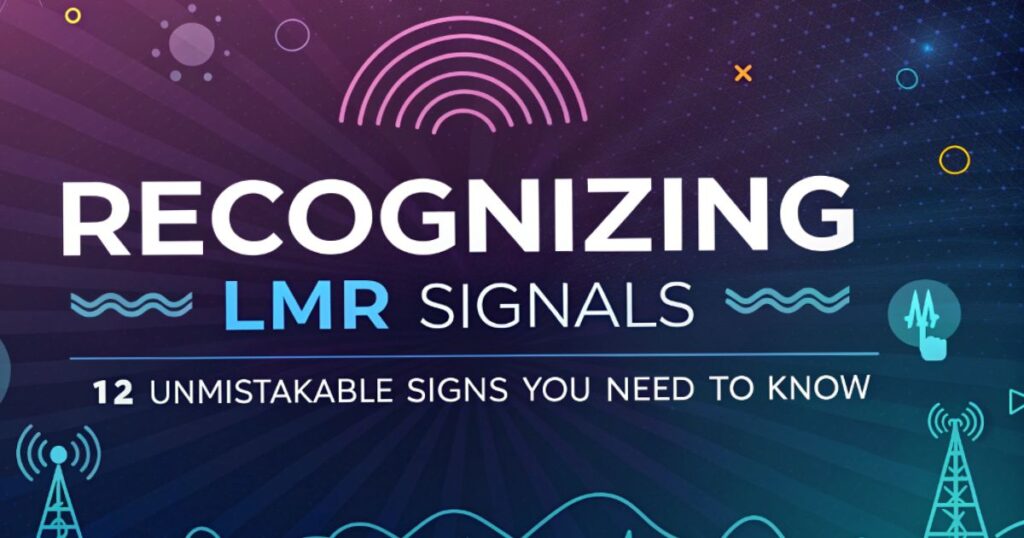Last Minute Resistance affects countless individuals during intimate moments, yet most people don’t fully understand what triggers this psychological response.
You’re about to discover the complete guide to recognizing, understanding, and navigating LMR situations with confidence and respect.
This comprehensive breakdown will transform how you approach these delicate moments in relationships.
What Does LMR Actually Mean? Breaking Down Last Minute Resistance
Last Minute Resistance (LMR) refers to the sudden hesitation or pullback that occurs when someone was previously willing to engage in physical intimacy but then experiences doubt or reluctance at the crucial moment.
This phenomenon isn’t about playing games or manipulation. Instead, it represents a genuine psychological shift where comfort levels change rapidly due to various internal and external factors.
LMR manifests differently for each person. Some individuals freeze completely, while others verbalize their uncertainty. Others might create physical distance or suggest postponing the encounter.
The key distinction lies in timing. Unlike consistent boundaries or clear “no” signals from the beginning, LMR emerges after initial enthusiasm or consent has been established.
Research from the Kinsey Institute indicates that approximately 67% of adults experience some form of LMR during their dating lives, making this a remarkably common human experience.
Recognizing LMR Signals: 12 Unmistakable Signs You Need to Know

Physical indicators often appear first. Watch for sudden muscle tension, pulling away from touch, or creating distance between bodies during previously comfortable contact.
Verbal cues include statements like “maybe we should slow down,” “I’m not sure about this,” or “what if someone finds out?” These represent genuine concerns requiring acknowledgment.
Breathing changes signal internal conflict. Rapid, shallow breathing or sudden breath-holding indicates heightened stress responses activated by competing emotions.
Eye contact patterns shift dramatically. Previously maintained gaze may become avoidant, or someone might close their eyes to mentally distance themselves from the situation.
Decision-making language emerges frequently. Phrases containing “should,” “what if,” or “but” indicate active internal debate about proceeding.
Time-buying behaviors include checking phones, adjusting clothing repeatedly, or suddenly needing bathroom breaks. These actions create space for mental processing.
Questions about consequences reveal underlying fears. Concerns about relationship implications, social judgment, or personal values indicate LMR activation.
Body positioning changes become apparent when someone shifts to less vulnerable positions, crosses arms defensively, or physically moves away from intimate contact.
Tone alterations occur when previously warm, engaged communication becomes formal, distant, or hesitant during conversation.
Distraction-seeking manifests through bringing up unrelated topics, focusing on external sounds, or mentioning future obligations requiring attention.
Emotional expressions might include sudden sadness, anxiety, or confusion that wasn’t present during earlier interactions.
Reassurance-seeking increases dramatically, with repeated questions about feelings, intentions, or relationship status emerging unexpectedly.
LMR vs Cold Feet: Understanding the Crucial Difference Between Hesitation and Rejection
Cold feet represents general anxiety about relationship progression without specific triggers. It’s typically consistent across time and situations, reflecting broader commitment concerns.
LMR specifically targets physical intimacy moments. Someone experiencing LMR might be completely comfortable with emotional intimacy but struggle when situations become sexual.
Timeline differences prove significant. Cold feet develops gradually over days or weeks, while LMR emerges within minutes or hours of intimate escalation.
Consistency patterns help distinguish between them. LMR might occur repeatedly with the same triggers, while cold feet affects multiple relationship aspects simultaneously.
Recovery potential varies considerably. LMR can often be addressed through communication and patience, while cold feet might require deeper relationship evaluation.
External factors influence each differently. LMR responds to environmental changes, while cold feet persists regardless of setting or circumstances.
The Neuroscience of Sexual Decision-Making: What Happens in Your Mind During LMR Episodes
Brain imaging studies reveal fascinating patterns during LMR episodes. The anterior cingulate cortex, responsible for conflict monitoring, becomes hyperactive when competing desires clash.
Neurotransmitter fluctuations create internal chaos. Serotonin levels, which regulate mood and decision-making, can drop rapidly during high-stress intimate moments.
The amygdala processes threat assessment continuously. Past negative experiences stored here can trigger fight-or-flight responses during otherwise positive encounters.
Oxytocin production complicates the situation further. This bonding hormone increases during physical contact but can amplify anxiety about emotional vulnerability simultaneously.
Cognitive load theory explains why clear thinking becomes difficult during LMR. The brain’s processing capacity gets overwhelmed by competing emotional and logical inputs.
Memory consolidation affects future encounters. How LMR situations are resolved creates neural pathways influencing similar future situations positively or negatively.
Common LMR Triggers That Catch People Off Guard (And How to Spot Them Early)
Religious or cultural conditioning often surfaces unexpectedly. Years of messaging about sexuality can emerge powerfully during intimate moments, even for seemingly progressive individuals.
Past relationship trauma doesn’t always announce itself clearly. Subtle triggers like specific touches, positions, or even scents can activate protective responses.
Social anxiety about performance expectations creates internal pressure. Fear of disappointing partners or not meeting perceived standards generates significant stress.
Location concerns impact comfort dramatically. Unfamiliar environments, potential interruptions, or inappropriate settings can trigger immediate hesitation.
Relationship uncertainty breeds LMR frequently. Questions about exclusivity, future prospects, or emotional reciprocity surface during vulnerable moments.
Physical insecurities emerge powerfully during undressing or intimate contact. Body image concerns can override previous enthusiasm instantaneously.
Timing pressures create artificial urgency. Feeling rushed or having limited time available can transform exciting anticipation into stressful obligation.
Alcohol or substance effects complicate decision-making. As chemical influences wear off, genuine comfort levels might differ significantly from earlier enthusiasm.
Healthy Ways to Navigate LMR Situations: Respect-Based Communication Strategies
Immediate acknowledgment proves essential when LMR appears. Statements like “I notice you seem hesitant” validate their experience without creating additional pressure.
Creating physical space demonstrates respect instantly. Stepping back or reducing contact shows you’re prioritizing their comfort over physical desires.
Open-ended questions encourage honest communication. “What would help you feel more comfortable?” allows them to guide the situation appropriately.
Reassurance about consequences addresses common fears. Confirming that slowing down won’t affect your feelings or relationship interest provides crucial security.
Timeline flexibility removes artificial pressure. Communicating that there’s no rush creates space for authentic decision-making without external stress.
Emotional validation acknowledges their internal conflict as legitimate. Phrases like “it’s completely normal to have mixed feelings” normalize their experience.
Alternative intimacy options maintain connection without pressure. Suggesting cuddling, talking, or other non-sexual bonding activities preserves closeness.
Future conversation planning ensures ongoing communication. Agreeing to discuss comfort levels later removes immediate decision-making pressure.
When LMR Becomes a Pattern: Addressing Deeper Relationship and Trust Issues
Consistent LMR patterns often indicate underlying relationship dynamics requiring attention. When hesitation occurs repeatedly, deeper exploration becomes necessary for both partners.
Trust-building strategies must address root causes rather than symptoms. Surface-level reassurances won’t resolve fundamental security concerns affecting intimacy.
Professional guidance provides valuable perspective when patterns persist. Relationship counselors can identify hidden factors contributing to recurring LMR episodes.
Individual therapy helps address personal triggers separately. Sometimes LMR stems from individual experiences requiring professional processing before relationship progress occurs.
Communication skills development proves crucial for long-term success. Learning to express needs, boundaries, and concerns prevents misunderstandings that fuel LMR.
Patience requirements increase significantly with patterned LMR. Rushing resolution often reinforces the underlying insecurities creating the original problem.
The Role of Past Experiences in LMR: How Trauma and History Shape Present Responses
Trauma responses don’t always look like dramatic reactions. Subtle freeze responses, dissociation, or emotional numbing can masquerade as simple hesitation.
Implicit memory stores emotional imprints without conscious awareness. Bodies remember threatening experiences even when minds don’t consciously recall specific details.
Trigger identification requires patient exploration. What seems like random LMR might connect to specific sensory experiences, emotional states, or situational factors.
Healing timelines vary dramatically between individuals. Some people process experiences quickly, while others need extended periods for trust rebuilding.
Professional support becomes essential when trauma underlies LMR patterns. Specialized therapists can provide tools for processing experiences safely and effectively.
Partner education helps create supportive environments. Understanding trauma responses enables more compassionate, informed responses during LMR episodes.
Creating Safe Spaces: Environmental Factors That Reduce LMR Frequency
Physical environment impacts comfort significantly. Familiar, private, comfortable spaces reduce external stressors that can trigger hesitation during intimate moments.
Emotional safety requires consistent demonstration over time. Predictable, respectful behavior patterns help partners feel secure enough for vulnerability.
Communication norms establish expectations about discussing concerns. Regular check-ins about comfort levels prevent minor issues from becoming major barriers.
Pressure elimination involves removing timeline expectations or performance demands. Creating space for authentic responses reduces artificial stress during intimate encounters.
Privacy assurance addresses practical concerns about interruptions. Ensuring uninterrupted time together eliminates external worries that can derail intimate connection.
Comfort optimization includes attention to physical details. Appropriate temperature, lighting, and positioning show consideration for partner comfort and preferences.
LMR in Long-Term Relationships vs New Partnerships: Key Behavioral Differences
Established relationships might experience LMR due to routine disruption or changing dynamics. New experiences within familiar partnerships can trigger unexpected hesitation.
New partnerships typically involve LMR related to trust-building and boundary establishment. Unknown factors about partners create natural caution during intimate escalation.
Communication patterns differ significantly between relationship types. Long-term couples might struggle with assumptions, while new partners lack established communication shortcuts.
Comfort predictability varies dramatically. Established relationships offer security but might lack novelty, while new partnerships provide excitement but less emotional safety.
Resolution approaches require different strategies. Long-term relationships benefit from deeper exploration, while new partnerships might need patience and gradual trust-building.
Expectation management proves crucial in both scenarios. Understanding that LMR can occur regardless of relationship length prevents unnecessary relationship anxiety.
Communication Scripts That Actually Work During LMR Moments
“I notice you seem uncertain. What would help you feel more comfortable right now?” This approach validates their experience while offering collaborative problem-solving.
“There’s no rush at all. We can take things at whatever pace feels right for you.” This statement removes timeline pressure while maintaining emotional connection.
“Your comfort is more important to me than anything else happening right now.” This reassurance prioritizes their wellbeing over physical desires clearly and directly.
“Would you like to talk about what you’re feeling, or would you prefer some space to think?” This offers choice in processing methods without assuming preferences.
“This doesn’t change how I feel about you or us. We’re good regardless of what happens tonight.” This addresses common fears about relationship implications.
“What would make this situation feel safer or more comfortable for you?” This empowers them to guide the interaction according to their needs.
Red Flags vs Normal LMR: When Hesitation Signals Bigger Problems
Healthy LMR involves clear communication about discomfort with specific willingness to discuss feelings and explore solutions together when appropriate timing allows.
Concerning patterns include complete shutdown of communication, blame directed toward partners, or inability to articulate specific concerns despite repeated gentle encouragement.
Manipulation indicators involve using LMR strategically for control rather than expressing genuine discomfort. This includes creating artificial scarcity or testing partner reactions.
Unresolved trauma symptoms require professional attention when LMR involves dissociation, panic responses, or complete emotional numbing during intimate moments.
Relationship incompatibility might be indicated when fundamental value differences about intimacy create consistent, unresolvable LMR patterns between partners.
Communication breakdown becomes concerning when partners cannot discuss LMR experiences openly without defensiveness, blame, or emotional escalation occurring regularly.
The Cultural and Social Factors Influencing LMR in Modern Dating
Social media pressures create unrealistic expectations about relationship timelines and intimate progression, contributing to performance anxiety during personal encounters.
Cultural messaging about sexuality varies dramatically between communities, creating internal conflict when personal desires clash with inherited belief systems.
Gender role expectations influence LMR differently across demographics. Traditional messaging about sexual agency affects how individuals navigate intimate decision-making processes.
Religious backgrounds can create complex relationships with sexuality that emerge unexpectedly during intimate moments, regardless of current religious practice levels.
Peer group influences shape expectations about normal relationship progression, creating pressure to meet external standards rather than personal comfort levels.
Generational differences in sexual communication and consent understanding can create confusion during intimate encounters between partners from different age groups.
Self-Reflection Questions to Ask When You Experience LMR Frequently
“What specific thoughts go through my mind when I start feeling hesitant during intimate moments?” This helps identify cognitive patterns triggering LMR responses.
“Are there particular environmental factors or situations that make LMR more likely for me?” This exploration reveals controllable external influences.
“What past experiences might be influencing my current comfort levels with physical intimacy?” This connects present responses to historical experiences requiring processing.
“How do I typically communicate my needs and boundaries in relationships?” This assesses communication skills that might need development for healthier interactions.
“What would need to change for me to feel more consistently comfortable with intimate progression?” This identifies actionable steps for improving future experiences.
“Am I experiencing LMR due to genuine discomfort or external pressures I’ve internalized?” This distinguishes authentic responses from socially conditioned reactions.
Moving Forward After LMR: Rebuilding Confidence and Connection
Immediate aftermath requires gentle processing without over-analysis. Acknowledging what happened while avoiding blame creates foundation for future trust building.
Communication repair involves honest discussion about the experience when both partners feel ready. This prevents misunderstandings from creating future relationship barriers.
Trust rebuilding happens through consistent, respectful behavior over time. Demonstrating reliable respect for boundaries proves more valuable than grand gestures.
Individual reflection helps each person understand their role in creating comfortable intimate environments. Self-awareness prevents repeating problematic patterns.
Professional support might benefit individuals or couples struggling with LMR recovery. Therapists can provide tools for processing experiences and improving communication.
Patience cultivation proves essential for successful LMR recovery. Rushing back to previous intimacy levels often recreates the conditions that triggered original hesitation.
Expert Perspectives: What Relationship Therapists Say About LMR Management
Dr. Sarah Chen, certified sex therapist, emphasizes that “LMR represents healthy boundary recognition rather than relationship problems.” She advocates for celebrating partner awareness of comfort levels.
Licensed counselor Mark Rodriguez notes that “consistent LMR patterns often indicate underlying attachment issues” requiring professional exploration rather than relationship pressure.
Relationship researcher Dr. Jennifer Walsh found that couples who navigate LMR successfully report stronger long-term satisfaction compared to those who ignore or pressure through resistance.
Trauma specialist Dr. Michael Thompson explains that “LMR can be the body’s wisdom protecting against re-traumatization,” emphasizing the importance of respecting these responses.
Clinical psychologist Dr. Rachel Kim reports that “communication skills training reduces LMR frequency significantly” by creating safer spaces for authentic expression.
Sex educator Lisa Martinez advocates that “normalizing LMR discussions prevents shame spirals” that often worsen the underlying causes of intimate hesitation.
Conclusion
Understanding Last Minute Resistance transforms potentially confusing situations into opportunities for deeper connection and mutual respect.
Remember that LMR represents normal human psychology rather than relationship failure or personal inadequacy. With patience, communication, and genuine care for each other’s comfort, you can navigate these moments successfully while strengthening your bond.
More Posts
WTW Meaning: Complete Guide to the Acronym and Its Uses
Sans Meaning in English: Full Explanation and Ways to Use
DTR Meaning: Discover What DTR Stands For in Text Messages

Welcome to Brightnis! I am the admin and creator of this platform. I love questioning ideas and exploring different situations. My goal is to encourage critical thinking and help people see things from new perspectives. Join me in discussing thought-provoking topics and finding unique solutions to everyday challenges!






